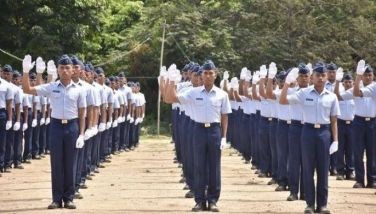Gungat burial chambers: Ifugao’s best kept secret
IFUGAO, Philippines – There is more to Ifugao province than the World Heritage rice terraces. One of the secrets of Ifugao is the existence of pre-Hispanic multi-chambered burial sites or gungat.
Together with the preparation of the terraces centuries ago was the preparation of the gungat by the ammod (forebears) for their kinsmen. Villagers believe that the terraces and the gungat were probably created by the same native geniuses.
The existence of these burial sites was not known even among Ifugaos, who traditionally do not observe All Saints’ Day and All Souls’ Day. Only the families who owned the gungat knew of their existence and location.
Gungat are made in places with firm soil or rock to ensure that the structure will not collapse. A typical gungat has a small entrance and tunnel leading to the burial chambers, which become even more multi-chambered with the passage of time.
Inside, each of the gungat’s chambers has space enough for the coffin of a newly departed kinsman of the family that owns the burial place.
In the deeper end of the gungat are the bones of the more distantly departed, some still in their traditional sitting position.
Pugong, a tribal elder, is said to have tended one of these gungat of his forebears in Hingyon town for years until he himself was buried there by his descendants, continuing the traditional cycle that started millennia ago.
“There are many gungat in Ifugao, especially in Hingyon, formerly part of Banaue where the pumapayo (rice terraces builders) come from,” said Martin Bantiyan.
But not everybody can be buried in the gungat. According to tradition, only the kadangyan (wealthy) have the right to be buried in their gungat.
The late MalayyuLah-u Bantiyan, a 92-year-old tinanudan (descendant) of the Bantiyan clan of Bito village, Hingyon town, was among the last to be buried in the family gungat by his son, former Hingyon vice mayor Marcos Bantiyan and other relatives, placing the newly departed among the thousands of ancestors buried ahead.
Like most traditional burials, the burial in the Bantiyan gungat was an arduous affair, with pallbearers carrying the remains through difficult terrain like rice paddies and rolling hills following traditional guidelines, with only in-laws being allowed to bear the dead.
With the burial ceremonies done, the gungat was once again sealed with clay, and no cement is used in the bricks to cover the gungat.
According to Moses Lupai, the gungat has to be fixed well with kabite or tuping (cut rock) after a burial so that air and moisture would be prevented from entering.
“You have to immediately return the original soil so that it would not smell, be dug out by dogs or so that insects would not enter,” he said.
The tradition of the gungat is a part of the rich Ifugao culture slowly becoming forgotten as natives in the area leave and settle in urban areas such as neighboring Nueva Vizcaya’s town of Solano, where they are now thriving in trade and commerce.
According to Miguel Ballogan, a Church leader, the gungat is the original lubuk (cemetery) of the Ifugao.
“We can say that even our Lord Jesus Christ was buried in something like a gungat, and since we Ifugao are no longer pagans, there have been changes in the practice of burial, even in the gungat,” he said.
There are “modern” cemeteries which are more accessible and which most Ifugaos now utilize.
But even for those who opt for the traditional gungat, there has been a modification in practice as well.
“The original practice was for the dead to be placed in a sitting position called hangdel and wrapped in a traditional blanket for the dead called bayyaung. Now the dead are buried in coffins,” said Lourdes Tumual.
Observing All Souls’ Day for 9 days
Residents of Barangay Betis in Guagua town, Pampanga also have a unique tradition of remembering the dead: they observe All Souls’ Day for nine days.
Residents visit the tombs of their departed loves and celebrate masses for their souls for nine days, starting yesterday up to Nov. 9.
The tradition includes the offering of nine-day novena. The last day is highlighted by a morning mass followed by the blessing of graves in the cemetery.
With Ric Sapnu
- Latest
- Trending
































